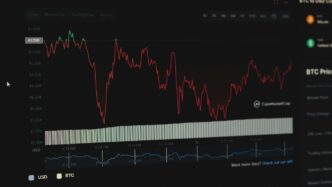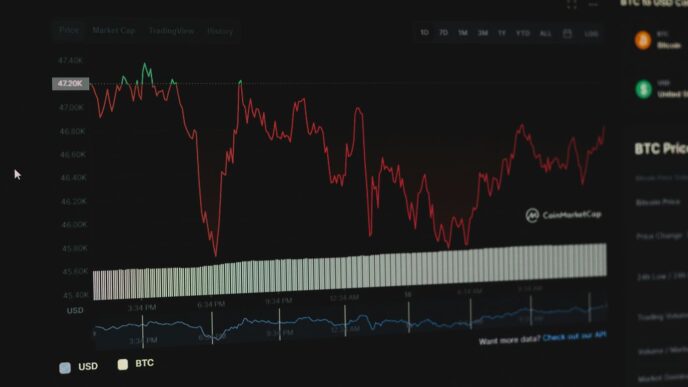Have you ever wondered if there’s more to tracking your health than just counting steps? Most fitness gadgets just give you basic numbers. But what if you could really understand what your body is telling you? That’s where WHOOP comes in. It’s not just another tracker; it’s a tool that helps you see the hidden messages in your daily data, so you can make smarter choices for your well-being. Let’s dig into how WHOOP helps you get a better handle on your health.
Key Takeaways
- WHOOP goes beyond simple fitness tracking, giving you a full picture of your body’s state.
- The device uses advanced sensors to collect lots of data, much more often than other trackers.
- You get personalized advice from your WHOOP data to help improve your recovery and training.
- WHOOP 4.0 keeps an eye on your health all the time, looking at more than just exercise.
- The reports from WHOOP turn your data into clear, useful information you can act on.
Understanding WHOOP’s Core Purpose
What Sets WHOOP Apart?
WHOOP isn’t just another fitness tracker; it’s designed to provide insights into your body’s performance, recovery, and sleep. It aims to help you understand your body on a deeper level, going beyond basic step counting and calorie tracking. Unlike some trackers that only sample data periodically, WHOOP collects data continuously, giving you a more complete picture of your physiological state. It’s like having a personal coach that’s always monitoring your body’s signals.
Beyond Basic Fitness Tracking
Many fitness trackers focus on activity. WHOOP takes a more holistic approach. It considers strain, recovery, and sleep to provide a more complete picture of your overall well-being. It’s not just about how much you exercise, but how well your body adapts to that exercise. WHOOP can guide you through exercise, recovery and sleep. For example, it tells you if your body has recovered sufficiently to push it during your next workout, or if it’s better to take it easy for a day. It also lets you know how much sleep you’ll need tonight, based on your level of activity during the day and any sleep debt you might have accrued. WHOOP also integrates with several health and fitness platforms, including Apple Health.
The Continuous Data Advantage
WHOOP’s continuous data collection is a key differentiator. By collecting data 100 times per second, WHOOP can detect minuscule changes in how your body responds to exercise, rest and other stimuli throughout the day and overnight. This allows for more personalized insights and recommendations. The high-frequency data collection allows WHOOP to correlate data and provide a comprehensive view of your health at all times. This constant stream of information allows WHOOP to provide insights that other trackers simply can’t match. It’s like comparing a flipbook to a movie – the more data points, the smoother and more detailed the picture becomes.
WHOOP Hardware and Sensor Technology
Advanced Biometric Sensors
Okay, so WHOOP isn’t just another fitness tracker. It’s got some serious tech packed inside. It’s designed to constantly monitor your body, collecting data on things like heart rate, heart rate variability (HRV), skin temperature, and even blood oxygen saturation. It even tracks movement with a 3D accelerometer. All this data gives you a pretty complete picture of what’s going on inside. The WHOOP 5.0 takes it even further with improved sensor tech.
High-Frequency Data Collection
The key thing that sets WHOOP apart is how often it collects data. We’re talking 100 times per second, 24/7. This constant stream of information allows WHOOP to pick up on tiny changes in your body that other trackers might miss. Think about it: a quick spike in heart rate after a stressful meeting, or a subtle shift in HRV after a bad night’s sleep. WHOOP catches it all. This is how it can correlate changes to your core biometrics and sleep quality to lifestyle choices.
How WHOOP Differs from Competitors
Most fitness trackers only sample your heart rate every few minutes, except maybe during workouts. WHOOP’s continuous monitoring gives it a huge advantage. It’s like comparing a blurry snapshot to a high-definition video. Because WHOOP collects so much data, it can provide much more personalized and accurate insights. This is especially important for things like recovery and sleep analysis, where even small variations can make a big difference. It’s not just about tracking steps; it’s about understanding how your body responds to everything you do. The accuracy of heart rate variability tracking is a big deal.
Unlocking Performance with WHOOP Data

WHOOP isn’t just about collecting data; it’s about turning that data into actionable insights that can help you improve your performance and overall well-being. It’s like having a personal coach constantly monitoring your body and providing feedback. The key is understanding how to interpret and use the information WHOOP provides.
Personalized Insights and Analysis
WHOOP really shines when it comes to giving you personalized insights. It’s not just generic advice; it’s tailored to your body and your activity levels. After wearing the WHOOP tracker for a while, you’ll start to see patterns and correlations that you might not have noticed otherwise. For example, you might realize that you consistently have lower recovery scores after eating certain foods or that you sleep better when you stick to a specific bedtime routine. This level of personalization is what sets WHOOP apart from many other fitness trackers.
Optimizing Recovery and Strain
One of the most useful things WHOOP does is help you balance strain and recovery. It measures your daily strain based on your activity levels and then tells you how well your body has recovered overnight. This information is super helpful for planning your workouts. If your recovery score is low, it might be a good idea to take it easy or focus on active recovery. If your recovery score is high, you can push yourself a little harder. It’s all about listening to your body and using the data to make smart decisions. Here’s a simple example:
- High Strain + Low Recovery = Rest or Light Activity
- Moderate Strain + Moderate Recovery = Moderate Workout
- Low Strain + High Recovery = Intense Workout
The WHOOP Journal for Habit Tracking
The WHOOP Journal is a great tool for tracking your habits and seeing how they affect your performance. You can log things like your sleep schedule, diet, stress levels, and even whether you took any supplements. Then, WHOOP will analyze the data and show you how these factors are impacting your recovery, strain, and sleep. It’s like a science experiment on yourself! The WHOOP Journal lets you track dozens of behaviors, from the consumption of your last paleo meal to air travel and everything in between. Plus, WHOOP keeps adding new journal entry “behaviors” every couple of months. Here are some examples of things you can track:
- Sleep Consistency
- Alcohol Consumption
- Stress Management Techniques
- Caffeine Intake
Comprehensive Health Monitoring with WHOOP 4.0
Continuous Health Data Streams
WHOOP 4.0 really shines when it comes to giving you a constant flow of health data. It’s not just about checking in once in a while; it’s about having a personal health assistant that’s always on. This means you get info on everything from your heart rate variability to how well you’re sleeping, all the time. It’s like having someone keep an eye on things and help you make better choices for your health and fitness.
Holistic View of Your Well-being
What’s cool about WHOOP 4.0 is that it looks at the bigger picture. Lots of trackers focus on how much you move, but WHOOP also tells you about your recovery, how much strain you’re putting on your body, and your sleep. It even tracks things like your skin temperature and blood oxygen levels. Plus, you can log your daily habits, like how much caffeine you’re drinking, to see how they affect you. This gives you a complete view of your health.
Tracking Beyond Physical Activity
WHOOP goes beyond just counting steps. It’s more of a lifestyle companion. It uses your data to give you advice that’s just for you. For example, it can look at your sleep and activity and tell you how much sleep you need to get the most out of your recovery and performance. The WHOOP Journal is also a great feature. You can log what you do every day and see which habits are helping or hurting your progress. This helps you understand yourself better and change your habits for the better.
For example, I noticed that after having two glasses of red wine close to bedtime, my resting heart rate increased to 60 beats per minute (which is high for me). As a result, I got a warning right on the home screen of the WHOOP app.
Skin temperature monitoring is a new feature of WHOOP 4.0, thanks to a new sensor that wasn’t present in the previous generation. In a nutshell, monitoring skin temperature can give you insights into your sleep quality and overall wellness. Additionally, if you menstruate, being aware of sudden increases in skin temperature can give you a heads up as to when your period is about to start.
Actionable Insights from WHOOP Reports
WHOOP doesn’t just collect data; it transforms it into something you can actually use. It’s like having a personal coach who knows your body inside and out. The reports are designed to highlight trends, pinpoint areas for improvement, and help you make smarter choices about your training and recovery. It’s about understanding the ‘why’ behind the numbers.
Weekly Performance Assessments
Every week, WHOOP provides a summary of your key metrics. This includes your average strain, sleep performance, and recovery scores. It’s a quick way to see how your body is responding to your training load and lifestyle. The weekly assessment also highlights any significant changes or trends that you should be aware of. For example, if your recovery scores have been consistently low, it might be a sign that you’re overtraining or not getting enough sleep. It’s a great way to track your fitness over time.
Monthly and Yearly Data Summaries
Going beyond the weekly snapshot, WHOOP also offers monthly and yearly reports. These summaries provide a broader perspective on your overall health and fitness. You can see how your training and recovery patterns have evolved over time, identify long-term trends, and assess the impact of lifestyle changes. It’s like looking at the big picture, rather than just focusing on the day-to-day details. These reports can be especially useful for tracking progress towards long-term goals, such as improving your cardiovascular fitness or reducing your risk of injury.
Comparing Your Data to the WHOOP Community
One of the coolest features of WHOOP is the ability to compare your data to other members of the WHOOP community. This can provide valuable insights into how you stack up against others with similar demographics or training goals. It’s not about competing, but rather about gaining a better understanding of what’s possible and identifying areas where you might be able to improve. For example, you can see how your sleep performance compares to other people in your age group or how your strain levels compare to other athletes in your sport. It’s a great way to get personalized insights and stay motivated.
The Value Proposition of WHOOP Membership
WHOOP isn’t just another fitness tracker; it’s a commitment to understanding your body on a deeper level. The membership model unlocks a range of features and benefits designed to help you optimize your health and performance. It’s like having a personal trainer and data analyst rolled into one.
Professional-Quality Analytics
One of the biggest draws of a WHOOP membership is access to professional-grade analytics. This goes way beyond simple step counting or calorie tracking. You get detailed insights into your sleep, recovery, and strain levels, all presented in an easy-to-understand format. The app analyzes your data to identify trends and patterns, helping you make informed decisions about your training and lifestyle. It’s like having a sports science lab on your wrist, constantly monitoring and interpreting your body’s signals. This can be especially useful for athletes looking to fine-tune their training regimen and avoid overtraining.
Community of Health Enthusiasts
Beyond the data, a WHOOP membership connects you to a community of like-minded individuals. You can share your progress, participate in challenges, and learn from others who are also striving to improve their health and fitness. This sense of community can be a powerful motivator, helping you stay on track with your goals and providing support when you need it. It’s not just about the numbers; it’s about connecting with others who share your passion for health and wellness. Plus, you can compare your data to the WHOOP community to see how you stack up.
Guiding Better Lifestyle Choices
Ultimately, the value of a WHOOP membership lies in its ability to guide you toward better lifestyle choices. By providing continuous data and personalized insights, WHOOP helps you understand how your daily habits impact your overall health and performance. Whether it’s adjusting your sleep schedule, modifying your diet, or optimizing your training load, WHOOP gives you the information you need to make positive changes. It’s about more than just tracking your activity; it’s about using data to make informed decisions and live a healthier, more fulfilling life. It gives you a comprehensive view of your health.
WHOOP Versus Other Fitness Trackers
Addressing Wearable Shortcomings
Let’s be real, most fitness trackers give you steps, maybe sleep, and a rough estimate of calories burned. But do they really tell you what’s going on inside your body? Often, the answer is no. They might track your heart rate, but they don’t always give you the context to understand what that heart rate means. WHOOP aims to fill those gaps by providing a more complete picture of your health. It’s about understanding why you feel a certain way, not just recording that you feel that way. It’s like, sure, your regular tracker tells you that you ran 5 miles, but WHOOP tells you how those 5 miles impacted your recovery and what you need to do to bounce back stronger. If you’re looking for personal trainer near me, you’re probably looking for more than just basic step tracking.
Depth and Breadth of WHOOP Data
What sets WHOOP apart is the sheer amount of data it collects and, more importantly, how it analyzes that data. We’re talking about continuous heart rate monitoring, heart rate variability (HRV), sleep stages, skin temperature, and even blood oxygen levels. It’s not just about tracking activity; it’s about understanding your body’s response to that activity. Think of it this way:
- Most trackers give you a snapshot; WHOOP gives you a movie.
- Most trackers tell you what you did; WHOOP tells you how it affected you.
- Most trackers focus on activity; WHOOP focuses on recovery.
This depth of data allows WHOOP to provide personalized insights that other trackers simply can’t match. It’s like having a professional-quality analytics lab on your wrist (or, well, upper arm).
Why WHOOP Stands Out
So, why choose WHOOP over the sea of other fitness trackers? It boils down to a few key things:
- Actionable Insights: WHOOP doesn’t just give you data; it tells you what to do with it. It provides personalized recommendations for sleep, recovery, and training based on your body’s unique needs.
- Continuous Monitoring: Unlike trackers that only record data during workouts, WHOOP monitors your physiology 24/7, providing a more complete picture of your health.
- Focus on Recovery: WHOOP places a strong emphasis on recovery, recognizing that it’s just as important as training. It helps you understand how your lifestyle choices impact your recovery and provides guidance on how to optimize it.
While other trackers might be good for basic activity tracking, WHOOP is for people who are serious about understanding their bodies and optimizing their performance. It’s an investment in your health and well-being, not just a gadget to count steps.
Wrapping Things Up: What WHOOP Can Do For You
So, that’s the scoop on WHOOP. It’s not just another gadget you wear on your wrist. It’s more like a personal guide for your body. It helps you figure out what’s going on with your sleep, how hard you can push yourself, and when you really need to take it easy. For anyone who wants to understand their body better and make smarter choices about their health, WHOOP is a pretty solid option. It gives you real information you can use, and that’s a big deal.
Frequently Asked Questions
What exactly is WHOOP?
WHOOP is a special kind of wearable tech that tracks your body’s data all the time. It’s not just a basic fitness tracker. It helps you understand how your body handles exercise, recovers, and sleeps, giving you super detailed insights.
How does WHOOP help me improve my health?
WHOOP uses advanced sensors to collect tons of data, like your heart rate, how well you’re recovering, and your sleep patterns. It’s designed to give you a full picture of your health, not just how many steps you take.
What makes WHOOP different from other fitness trackers?
Unlike most other fitness trackers that only check your data sometimes, WHOOP collects information 100 times per second, all day and night. This constant flow of data means it can spot even tiny changes in your body, giving you much more accurate advice.
What is the WHOOP Journal and how does it work?
The WHOOP Journal lets you write down your daily habits. Then, WHOOP uses this info along with your body data to show you which habits are helping or hurting your health. It’s a great way to learn about yourself and make better choices.
What kind of reports can I expect from WHOOP?
WHOOP gives you detailed reports every week, month, and year. These reports show you how your training is going, how well you’re recovering, and how good your sleep is. You can even see how you compare to other WHOOP users.
Is WHOOP worth the money?
Yes, many people find WHOOP to be very valuable. It provides deep insights into your body that can help you make smarter choices about your workouts, recovery, and overall lifestyle. It’s like having a personal health coach on your wrist.














